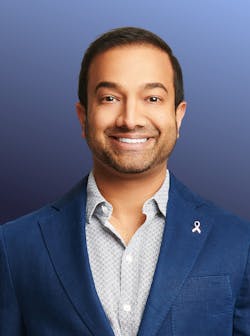By Roshan Parikh, DDS, MBA
When artificial intelligence first appeared on the dental horizon, plenty of us recognized its transformative potential. But dentistry is notoriously slow to adopt new technologies. The smart money would have bet against AI. I would have told you that AI needed significant advocacy to make even modest advances in the dental industry by 2025. For that very reason, I agreed to support AI in dentistry, helping spearhead the Dental AI Council and joining the advisory board of a dental AI startup. But the smart money also would not have bet on a global pandemic.
This past year changed many things, and one of them is that AI no longer needs our help to advance in dentistry.
In 1997, Reader’s Digest published an article by an investigative journalist who took his dental x-rays to 50 dentists around the country and received 50 different treatment recommendations. Such revelations, which may bring nothing more than a “What else is new?” shrug from patients, are greeted with incredulity and indignation by many of our peers. Suggestions of the promise of AI bring a similar response. Dentists like the tried and true, and ordinarily I wouldn’t expect them to be in a hurry to embrace such a novel technology, especially when they believe they’re doing fine without it.
But these are not ordinary times. The pandemic shattered dentists’ confidence that we’re doing just fine, forcing us all to accept new modes of operating and technological change. The spasm of adaptation we experienced this year will open a pathway through which other novel technology-driven processes will gain entry, including computer vision, data mining, and predictive analytics AI solutions for diagnosis, treatment planning, and business intelligence.
To the fact that this transformative technology is at hand and we are suddenly disposed to welcome it, add that we're seeing an unprecedented surge of dental consolidation. Dentistry has long existed as a cottage industry, but we’re seeing a rapid increase in the absorption of small private practices into private equity and institutional capital-owned dental service organizations (DSOs), and of large DSOs absorbing small DSOs. The wave of consolidation will help carry the new technologies forward.
This trend is being driven by the usual economic and managerial advantages of scale, but consolidation of dental practices also means consolidation of practice data, and AI turns data into value. The more dental practices consolidate, the more useful their data becomes. The pressure to consolidate practices into groups will increase as groups see AI transform their consolidated data into greater profits and better patient care. Even if some dentists don’t see the need for AI in dental care, consolidative business interests will prevail on them to deploy it.
From there, it follows that AI’s power and necessity in dentistry will grow.
Where are we today?
Today, AI systems match the diagnostic ability of skilled dentists. Dental insurers are already using those systems to validate claims. That means the technology is at least good enough to provide reasonable validation of patient diagnoses. Already that would bring an entirely new level of consistency to dental care and ensure that the Reader’s Digest story will never be repeated.
Machine learning systems’ perceptive abilities grow in proportion to the volume and variety of data available to them. The more data that is available—from patients, imaging devices, material applications, treatment plans, and other factors influencing dental care outcomes—the more perceptive AI will become. The more perceptive dental AI becomes, the more profoundly dentists and patients will benefit.
While AI’s value as a provider of second opinions and enforcer of consistency is evident, other applications—merging practice and patient data with diagnostic and treatment outcome data—will gradually establish new standards of care and operating efficiencies. Once AI is firmly established as a tool in care and practice management, new forms of data linkage—not only dental, but genetic, geographic, demographic, and medical—will allow AI to deliver truly revolutionary and potentially life-saving value by forging new links between systemic health and dental health.
I believe that in a decade we’ll look back at how we practiced dentistry today and think that it looks more like the 19th century than the 21st. That is why, as I leave my role as Head of Dentistry at Walmart, I am placing my bet on AI. AI is not just the short run down the middle that gets us to a first down. It's the long pass into the end zone; it’s a touchdown. It will link dentistry, systemic medicine, and electronic record keeping into a continuum that will bring a new level of consistency, clarity, and convenience to patients, not to mention better outcomes, which is what we're all trying to achieve.






